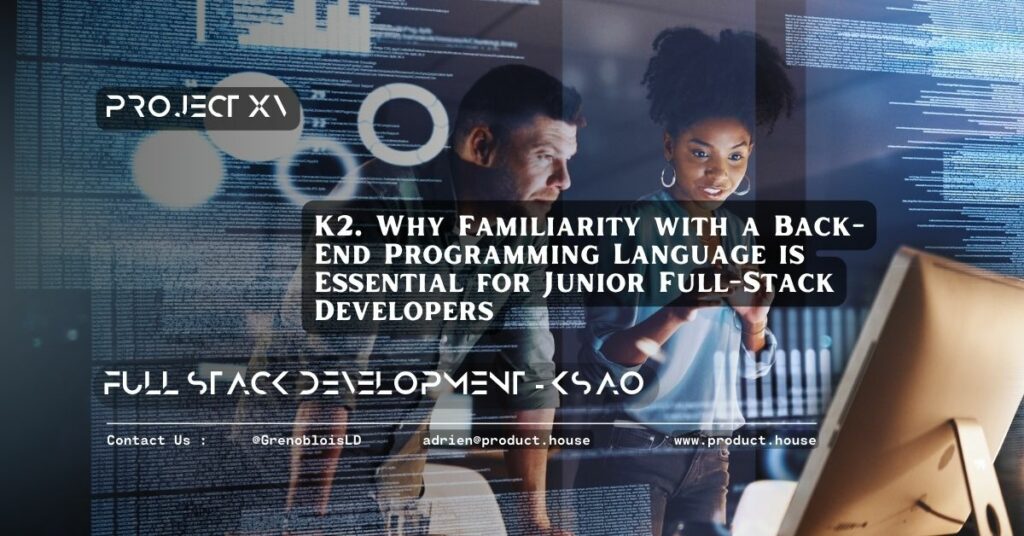K2. Why Familiarity with a Back-End Programming Language is Essential for Junior Full-Stack Developers

As the demand for web development professionals continues to grow, the skill set required of junior full-stack developers also evolves. While front-end development remains a critical component of the field, the importance of back-end programming languages, such as PHP, Python, and Node.js, cannot be overlooked. In this article, we will explore why familiarity with a back-end programming language is essential for junior full-stack developers and how it can enhance their skills and career prospects.
The Importance of Back-End Programming Languages
Back-end programming languages are used for server-side development, which involves writing code that runs on the server and processes requests from the client-side. While front-end development focuses on the presentation layer of a web application, back-end development is responsible for handling the logic and data storage required for the application to function.
PHP, Python, and Node.js are three of the most popular back-end programming languages used by developers today. PHP is a server-side scripting language that is widely used for web development and is particularly well-suited for building dynamic websites. Python is a versatile language that can be used for web development, scientific computing, and machine learning, among other applications. Node.js is a JavaScript-based runtime that enables developers to build scalable and high-performance network applications.
Why Familiarity with a Back-End Programming Language is Essential for Junior Full-Stack Developers
As a junior full-stack developer, it is essential to have familiarity with at least one back-end programming language. Here are some reasons why:
- A More Comprehensive Skill Set: Familiarity with a back-end programming language can enhance a junior developer’s skill set, making them a more valuable asset to their team and the industry as a whole.
- Increased Employability: Many employers in the web development field require candidates to have familiarity with at least one back-end programming language, making it a critical skill for job seekers.
- More Complex and Interesting Projects: With knowledge of a back-end programming language, junior developers can work on more complex and interesting projects, providing them with a sense of fulfillment and enhancing their professional growth.
- Understanding the Full Web Development Stack: Familiarity with a back-end programming language allows junior developers to understand the full web development stack, from the client-side to the server-side, making them more well-rounded and capable of handling complex projects.
Conclusion
Familiarity with a back-end programming language is a critical skill for junior full-stack developers. It enables them to work on more complex projects, enhances their employability, and provides a more comprehensive skill set. With the knowledge of popular back-end programming languages such as PHP, Python, and Node.js, junior developers can understand the full web development stack, from the client-side to the server-side, and take on exciting and challenging projects. As the web development industry continues to evolve, it is essential for junior full-stack developers to keep up with the latest trends and technologies, including back-end programming languages.
FAQ Reminder
- What are back-end programming languages? A: Back-end programming languages are used for server-side development, handling the logic and data storage required for the application to function.
- Why are back-end programming languages important for web development? A: Back-end programming languages are critical for web development as they enable developers to build scalable and dynamic web applications.
- What are some popular back-end programming languages used by developers? A: Some popular back-end programming languages used by developers include PHP, Python, and Node.js.
- Why is familiarity with a back-end programming language essential for junior full-stack developers? A: Familiarity with a back-end programming language is essential for junior full-stack developers as it provides a more comprehensive skill set, increased employability, and the ability to work on more complex projects.
- What are the benefits of having knowledge of a back-end programming language? A: The benefits of having knowledge of a back-end programming language include a more well-rounded understanding of the full web development stack, the ability to work on more complex and interesting projects, and professional growth.






